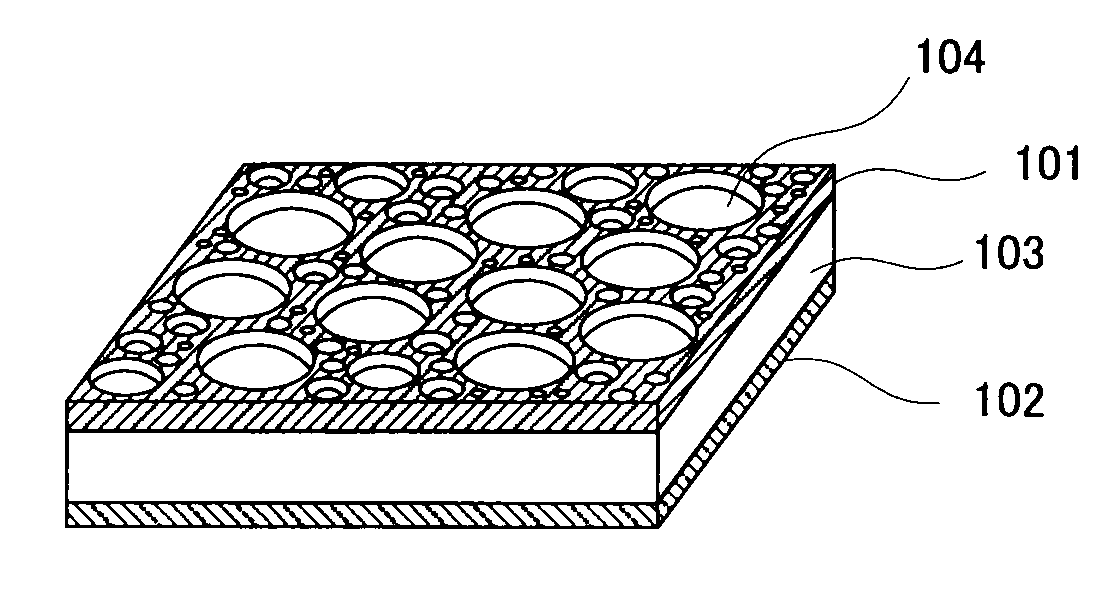Light transmission type solar cell and method for producing the same
a solar cell and transmission type technology, applied in the field of light transmission type solar cells, can solve the problems of insufficient transparency and module appearance, and achieve the effects of improving the antireflection layer, high transmittance, and increasing the photoelectric conversion efficiency of the solar cell
- Summary
- Abstract
- Description
- Claims
- Application Information
AI Technical Summary
Benefits of technology
Problems solved by technology
Method used
Image
Examples
example 1
Amorphous Silicon Type Solar Cell
[0146]The following example explains a process for producing an amorphous silicon type solar cell as an embodiment of the present invention. FIG. 6 shows schematic sectional views of a solar cell comprising a light-incident side electrode layer provided with openings according to the present invention.
[0147]Differing from a solar cell of crystalline silicon, an amorphous silicon type solar cell has a large light-absorbance and hence the light-absorption layer thereof can be thinned down. On the other hand, however, if a simple pn-junction is employed, it is known that carrier trap and recombination are liable to occur because of structure defects and the like. In view of that, the amorphous silicon type solar cell often has a pin-structure in which an i-layer of non-doped silicon is formed between a p-type silicon layer and an n-type silicon layer. When the i-layer receives light, carriers are separated into holes and electrons. Since an electric fie...
example 2
[0151]A first metal electrode 702 having the particular structure of the present invention was formed on a glass substrate 701 of light-transparency (FIG. 7A). The first light-transmission type metal electrode layer 702 was produced by the method employing block copolymer. The produced metal electrode layer was made of aluminum and was in the form of a mesh structure having a thickness of 50 nm, an average opening area of 9.8×103 nm2 (opening diameter: 112 nm) and an average opening ratio of 28.4%.
[0152]The obtained transparent substrate was then placed in an individual formation type plasma CVD apparatus, and amorphous silicon layers such as a p-layer 705, an i-layer 704, and an n-layer 703 were accumulated and formed in order under atmospheres of gases properly selected depending on properties required to individual layers, to produce a photoelectric conversion layer. Each layer was formed in a different independent chamber to avoid contamination. Subsequently, aluminum was vapor-...
PUM
 Login to View More
Login to View More Abstract
Description
Claims
Application Information
 Login to View More
Login to View More - R&D
- Intellectual Property
- Life Sciences
- Materials
- Tech Scout
- Unparalleled Data Quality
- Higher Quality Content
- 60% Fewer Hallucinations
Browse by: Latest US Patents, China's latest patents, Technical Efficacy Thesaurus, Application Domain, Technology Topic, Popular Technical Reports.
© 2025 PatSnap. All rights reserved.Legal|Privacy policy|Modern Slavery Act Transparency Statement|Sitemap|About US| Contact US: help@patsnap.com



